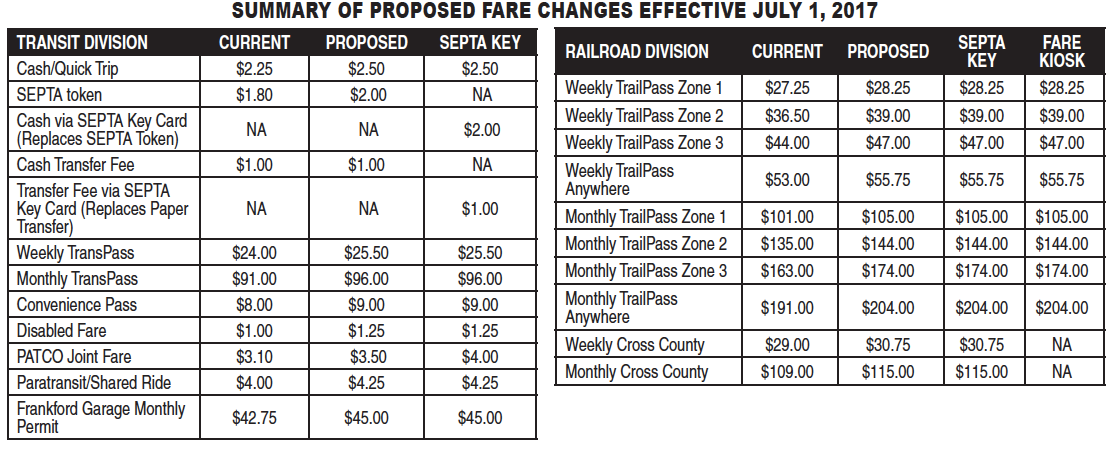

Lansdale/Doylestown trains and off-peak Airport trains will continue to stop at all three stations. “By running trains express from Jenkintown to Fern Rock, we open up space between trains and improve running times,” said Hopkins. The second change also involves the Warminster and West Trenton lines, whose trains will skip Melrose Park, Elkins Park and Wayne Junction stations on weekdays beginning with the December 13th schedule change. West Trenton and Warminster riders who wish to continue on to University City or the airport - yes, they exist, Hopkins said - will need to change trains at one of the Center City stations. Likewise, trains on the West Trenton and Warminster lines will no longer operate past 30th Street Station on weekdays.

and 3:30 to 7 p.m.), Airport Line trains will operate between Temple University and the airport, and at all other times, they will operate as far as Jenkintown-Wyncote on the Reading side. One change is the aforementioned uncoupling of the Airport Line from the Warminster and West Trenton lines on weekdays. Two changes aim at eliminating those delays: “A delay on one line causes delays on all three,” he said. Hopkins explained that trains on three lines compete for space on a single track in each direction. The most significant changes are designed to move trains faster through a major choke point on the Reading side, namely, the two-track main line between Fern Rock and Jenkintown-Wyncote stations. Ron Hopkins, SEPTA’s assistant general manager and chief operating officer, called the schedule changes that take effect Sunday “the most comprehensive schedule change in 20 years” at a news conference Wednesday afternoon (December 9th). As a result, the Airport Line is once again being uncoupled from the rest of the network as part of a larger reorganization of Regional Rail schedules and timetables. Steady ridership gains over the past several years have led to longer dwell times at stations, and the delays these cause ripple throughout the system. Now, 30 years later, the same problem has surfaced, but this time, it’s the result of the Regional Rail system choking on its own success. Management couldn’t guarantee that the trains would run on time, so in order to ensure that trains to the airport did, it was kept separate from the paired former Pennsylvania and Reading railroad lines that operated through the tunnel. Photos | Sandy Smithīack in 1985, when service began on SEPTA’s Airport Regional Rail line, the agency was still trying to get its railroad operations act together after a long and crippling strike in 1982. A map of the regional rail system with a North Broad bottleneck highlighted. SEPTA’s Ron Hopkins explains new service patterns on the Warminster, West Trenton and Airport lines (left).


 0 kommentar(er)
0 kommentar(er)
